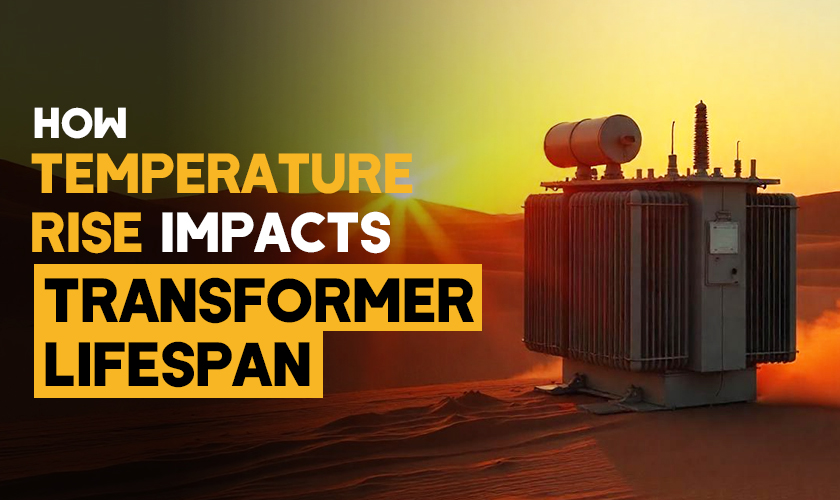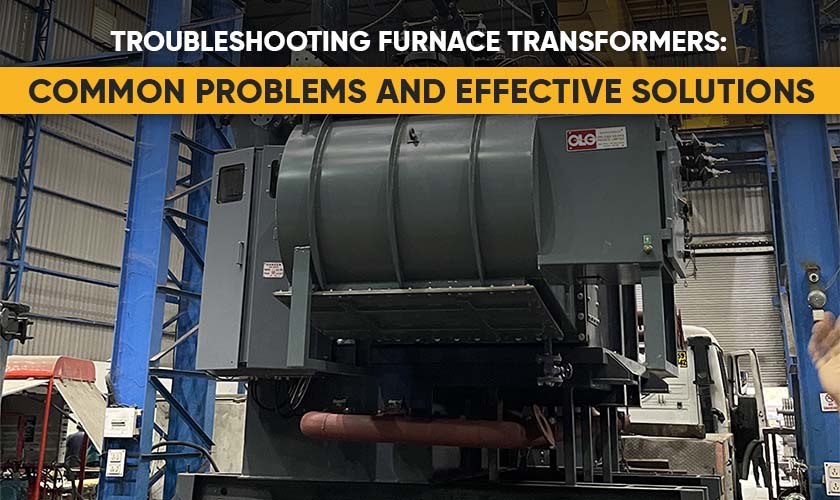Transformers are the silent heroes of our electrical world—powering homes, industries, and businesses without a fuss. But there’s one thing that can quietly shorten a transformer’s life without warning: temperature rise. While transformers are built to handle heat, excessive or sustained high temperatures can lead to faster aging, insulation breakdown, and costly failures.
Understanding how temperature rise impacts transformer lifespan isn’t just technical jargon—it’s critical for ensuring reliability, safety, and long-term performance. At Makpower Transformers, we prioritize efficiency and longevity in every unit we build. Let’s break down this heated topic in the simplest way possible.
What Causes Temperature Rise in Transformers?
Every transformer experiences heat during operation. This heat is primarily caused by two things:
- Copper Losses (I²R Losses): When electric current passes through the windings, resistance causes heat.
- Core Losses (Iron Losses): These occur in the transformer's magnetic core due to alternating magnetic fields.
Now, while these losses are inevitable, the actual problem begins when heat builds up faster than it can be dissipated. Poor ventilation, overloads, high ambient temperatures, and dirty cooling systems all contribute to an unhealthy temperature rise.
Why Is Heat So Harmful to Transformers?
Transformers are made up of several sensitive components, most notably, insulation systems and winding materials. These parts degrade over time, and heat accelerates this aging process.
Here’s why temperature rise is bad news:
- Insulation Degradation: The insulating paper and oil inside a transformer are vital for preventing electrical faults. When exposed to high temperatures, they become brittle, break down faster, and lose their effectiveness.
- Shorter Lifespan: Studies have shown that for every 10°C rise in temperature above the rated limit, the life of insulation is halved. That means if a transformer designed for 105°C consistently runs at 115°C, it could wear out twice as fast.
- Increased Risk of Failure: Overheating can lead to winding deformation, oil sludging, and even fire hazards.
Hotspots: The Hidden Danger Zones
Not all parts of a transformer heat up equally. Some internal sections, known as hotspots, experience more intense heat. These areas are often difficult to detect with just surface monitoring, but they can silently chip away at the transformer's health.
Even if the average temperature looks safe, hidden hotspots can cause insulation to fail early, leading to sudden and unexpected transformer breakdowns. That’s why it's essential to monitor not just the oil temperature but also hotspot temperatures.
Overloading: A Fast Track to Temperature Trouble
Transformers are designed with specific load capacities. When they're pushed beyond those limits, heat rises exponentially. This is called overloading, and while it might be tempting to do so during high-demand periods, it’s like making your car race in top gear continuously—it won’t last long.
Prolonged overloading leads to:
- Thermal stress on windings
- Increased dielectric losses
- Premature oil aging
Even short-term overloading, if frequent, can cause long-term damage. So, staying within the rated load range is key to keeping your transformer cool and healthy.
Cooling Systems: The Unsung Heroes
To counter temperature rise, transformers rely on cooling mechanisms like:
- Natural air cooling (AN)
- Oil natural air natural (ONAN)
- Forced air or oil circulation (OFAF, ONAF)
But cooling systems themselves need care. Blocked radiators, degraded fans, or low oil levels can reduce cooling efficiency, causing temperatures to rise even under normal loads.
At Makpower Transformers, we engineer our cooling systems for durability, efficiency, and ease of maintenance—so your transformer stays cool even in the hottest environments.
Climate and Environment: External Heat Also Counts
A transformer installed in a desert zone faces a very different life than one installed in a temperate region. Ambient temperature plays a big role in how efficiently a transformer can dissipate internal heat. In regions where temperatures frequently exceed 40°C, transformers need to be derated or designed with stronger cooling capacity.
Additionally, dust, pollution, and humidity can all reduce the effectiveness of heat dissipation. Keeping the external environment in mind is critical when selecting or maintaining a transformer.
Regular Maintenance: The Coolest Strategy
Heat-related aging is sneaky—it doesn’t always show immediate signs. That’s why preventive maintenance is essential. Routine checks and diagnostics can catch temperature-related issues before they escalate.
Key temperature-related maintenance includes:
- Monitoring oil temperature and quality
- Checking for oil leaks
- Testing insulation resistance
- Verifying fan and radiator functionality
- Scanning for hotspots using thermal imaging
We at Makpower Transformers always recommend regular servicing because proactive care equals prolonged performance.
Smart Monitoring: Staying Ahead of the Heat
Technology now allows us to keep a close watch on temperature in real-time. Smart sensors and automated control systems can alert operators to rising temperatures before things go wrong.
Temperature data from oil, winding, and hotspot areas can be used to:
- Temperature data from oil, winding, and hotspot areas can be used to:
- Activate cooling systems early
- Schedule maintenance based on condition, not just time
Investing in smart temperature monitoring isn’t just smart—it’s a game-changer for transformer longevity.
Conclusion: Stay Cool, Last Longer
Transformers are built to endure—but only if we respect their limits. Temperature rise, though silent and often unseen, is one of the most destructive forces for a transformer’s health. Whether it’s due to overloads, environmental stress, or internal inefficiencies, excess heat cuts short the lifespan and increases the risk of failure.
The good news? It’s preventable. With smart design, regular maintenance, efficient cooling, and the right operational practices, temperature-related issues can be kept in check. At Makpower Transformers, we don’t just build transformers, we build resilience. Because when your transformer stays cool, your operations stay strong.





